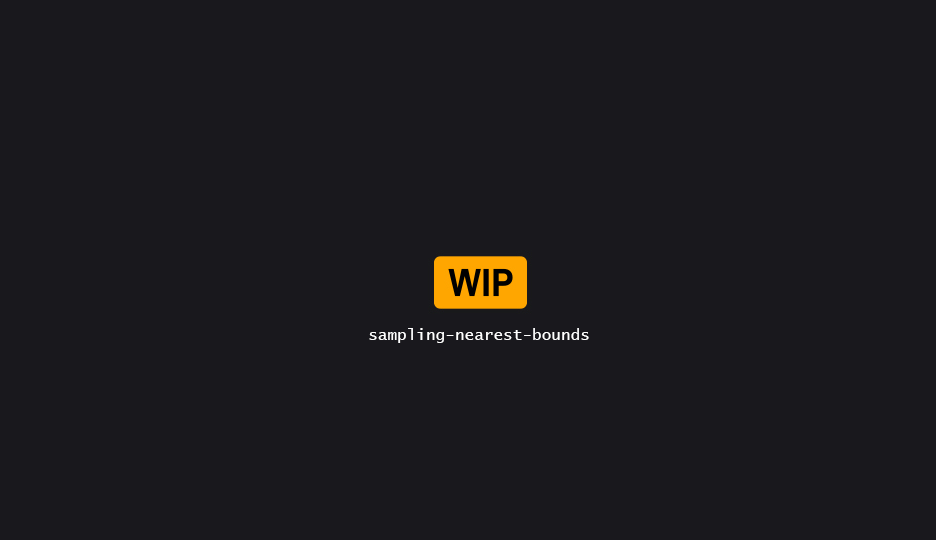Points that will sample data from targets
Points filters used to determine which points will be processed. Filtered out points will be treated as failed sampling.
Point bounds to read data from
In with extra attributes and properties
Table of content
The Sample Nearest Point grabs and blends attributes & properties from a target dataset as well as other spatial relationship outputs.
Input points sample the targets which bounds contains them, not the other way around. See Sample Inside Bounds if that’s what you were looking for.

Sampling
| Property | Description |
|---|---|
| Settings | |
| Sample Method | Selects the sampling method. See Sampling Methods. |
| Bounds Source | TBD |
| Weight Remap | TBD |
Sampling Methods
| Method | Description |
|---|---|
| All | TBD |
| Closest Bounds | TBD |
| Farthest Bounds | TBD |
| Largest Bounds | TBD |
| Smallest Bounds | TBD |
Blending
| Properties | Description |
|---|---|
| Target Attributes | A Name::Blendmode map of the attributes to grab from the target points, and which blendmode to use. |
| Point Propeprties Blending Settings | If enabled, lets you pick & choose which point properties you want to grab from the targets, and which blendmode to use. Use None to prevent a specific property from being grabbed.
|
See Blending.
Outputs
Outputs are values extracted from the bounds that encapsulate a given point, and written to attributes on the output points.
| Output | Description |
|---|---|
| Generic | |
Successbool
| TBD |
| Spatial Data | |
TransformFTransform
| TBD |
Look AtFVector
| TBD |
| └─ Align | TBD |
| └─ Use Up from… | TBD |
| └─ Up Vector | TBD |
Distancedouble
| TBD |
Signed Distancedouble
| TBD |
| └─ Axis | TBD |
Component-wise DistanceFVector
| TBD |
| └─ Absolute | TBD |
Angledouble
| TBD |
| └─ Axis | TBD |
| └─ Range | TBD |
Num Samplesint32
| TBD |
Based on the selected
Sample method, the output values are a weighted average of all the sampled targets. See Weighting.
Tagging
Some high level tags may be applied to the data based on overal sampling.
| Tag | Description |
|---|---|
| Has Successes Tag | If enabled, add the specified tag to the output data if at least a single target has been sampled. |
| Has No Successes Tag | If enabled, add the specified tag to the output data if no target has been sampled. |
Note that fail/success tagging will be affected by points filter as well; since filtered out points are considered fails.
Advanced
| Property | Description |
|---|---|
| Process Filtered Out As Fails | If enabled, mark filtered out points as “failed”. Otherwise, just skip the processing altogether. Only uncheck this if you want to ensure existing attribute values are preserved. Default is set to true, as it should be on a first-pass sampling. |